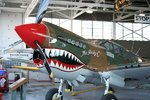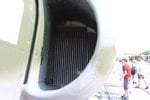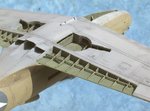That's why the belly-radiator didn't work on all aircraft?The P-40 did not need a boundary layer splitter - there was little or no boundary layer at that point, as the radiator intake was right behind the spinner.
I never saw the radiator up close like this before, but I get it.The P-38 did, albeit a duct rather than a splitter.
I'm curious if it would have been possible to extend the radiator a bit forward like the XP-40Q?[/QUOTE]And the P-39 had flaps to control the mass flow through the radiator
Attachments
Last edited:




 ?
?